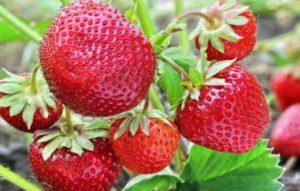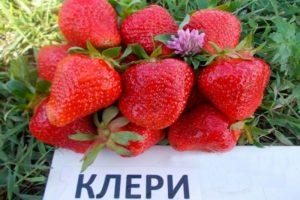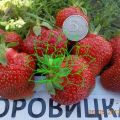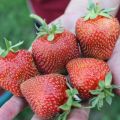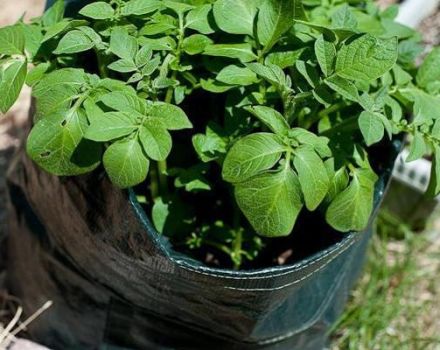Description and characteristics of the Jolie strawberry variety, cultivation and reproduction
Jolie's strawberry variety is a novelty on the beds of domestic summer residents. It appeared ten years ago in Europe, in large farms. Bred for growing on an industrial scale, has a high yield. Over time, Jolie's strawberries appeared on the garden beds. Its advantages: beautiful even berries, resistance to rot, drought and cold. Over time, the shortcomings of the variety began to appear, which you need to know about before planting.
Description and characteristics of strawberry Jolie
Strawberry Jolie is the result of crossing two varieties: Darselect and Clery. Bred in Italy. Refers to the group of non-refurbished. The description and reviews of the owners of large farms characterize the variety as cost-effective, hardy, unpretentious in care.
Jolie is drought-resistant, perfectly adapts to various weather and climatic conditions, quickly takes root. The variety is gaining popularity every year.
Strawberry bushes are characterized by large size, a large number of leaves, powerful and tall peduncles. The foliage is bright green in color. The roots are strong, viable. During the growing season, plants throw out a lot of whiskers, with the help of which they reproduce.
Fruits are cone-shaped, large, dense, bright scarlet. No voids are formed inside. The mass of the largest berries is about 40 grams. The largest ones appear in the middle of the fruiting period, by the end they become smaller. The berries have a bright aroma, sweet taste, with a barely perceptible acidity.
Jolie strawberry - medium early. Fruiting usually begins in mid-June and does not last long, no more than 3 weeks. But during this time, farmers manage to harvest high yields. Each strawberry bush produces an average of 800 to 1000 grams of fruit.

Like many European varieties, Jolie tolerates well even long-term transportation. Strawberries stay dry, firm and beautiful.
Advantages and disadvantages of the variety
The variety has many positive characteristics. Farmers highlight the following advantages:
- Size and shape. The berries are large, have a regular conical shape.
- Fruit aroma and taste. Experts rate them at 4.7 out of 5 points. On this basis, Jolie is considered one of the best varieties among those bred in Italy.
- The berries retain their appearance and taste well during transportation and storage.
- Plants tolerate drought, so they can be grown in regions with hot climates.
- The variety demonstrates winter hardiness, therefore it is perfect for keeping in areas with frosty winters.
- Strawberries are not susceptible to infections by fungus and rot, since the variety is immune to these diseases.
- Plants are undemanding to growing conditions; it is enough for them to apply standard agricultural techniques. The only important condition to consider for farmers growing Jolie strawberries in scarce soils is the need for frequent and abundant fertilization.
The variety also has its drawbacks. The main thing is the low position of the peduncles. The berries ripening on them often touch the ground. This leads to the fact that they get dirty, damaged by insects. But they are not exposed to rot, since the Jolie variety is resistant to it.
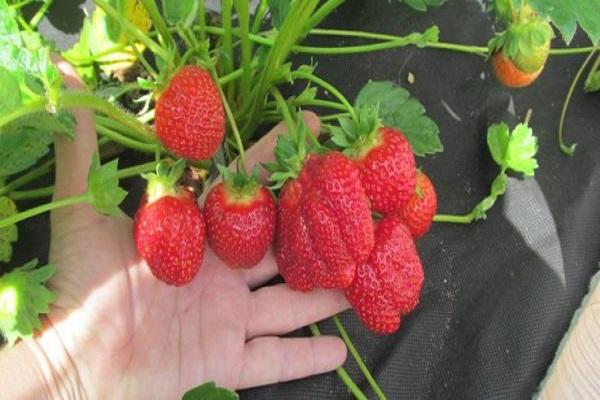
Landing features
To get an early and bountiful harvest, it is important to choose the right material, time and place of planting.
Preparation of planting material
Seedlings should have healthy, intact leaves and roots. Before you buy high-quality strawberry bushes, you need to carefully examine them. The length of the formed root system should be 8–10 centimeters. Shriveled leaves may indicate a tick infestation.
Before planting, you should not only select weak or infected plants, but also prepare healthy ones. To do this, remove dried leaves from the seedlings, shorten too long roots. It is good to soak the root system in water for 2-3 hours before planting.
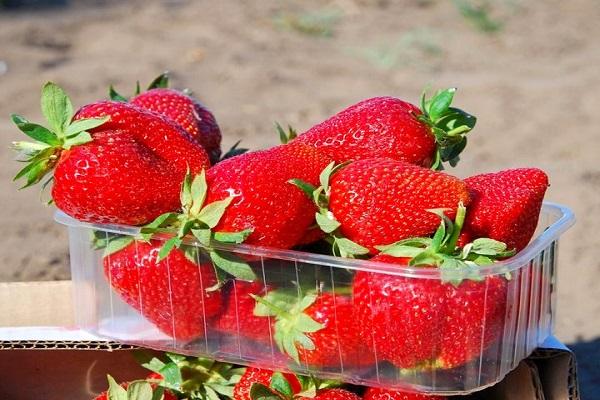
Pick up time and place
Planting time is a factor in the fruiting period. If you plant Jolie seedlings in the spring, then it will give a bountiful harvest only next year. And in the current growing season, you can expect only a few peduncles on each plant.
To achieve active fruiting in the next season, experienced gardeners recommend planting seedlings in early summer. Rooted mustache seedlings can be planted a little later, in August or early September. An important condition is to allow the plants to form flower buds before winter.
The correct place for planting strawberries must meet the following requirements: sufficient light, protection from the wind, neutral soil with a pH of more than 6. Planting in low-lying areas is considered an unsuccessful choice, since the plants do not tolerate excess moisture. In the event that groundwater occurs near the surface, high beds must be created for seedlings.
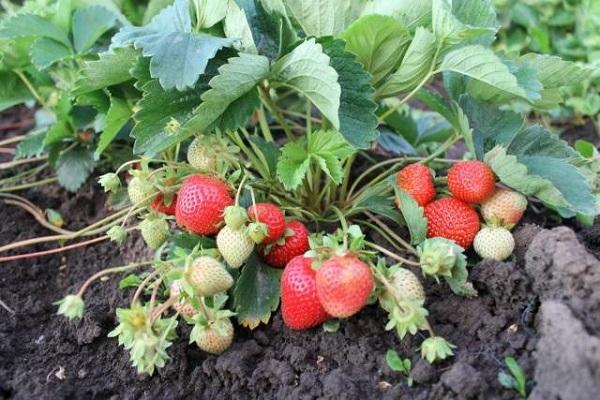
It is recommended to prepare the soil for planting 3-4 weeks in advance. It must be dug up, saturated with organic matter. Up to 5 buckets of organic fertilizers are applied per square meter of land. And immediately before planting seedlings in the soil, holes are made 10 centimeters deep at a distance of 25-30 centimeters from each other, and 2 tablespoons of superphosphate and a glass of vermicompost are added to each of them.
Landing technology
The correct agricultural technique for planting seedlings is as follows:
- Pour 300 milliliters of water into the planting hole.
- Lower the seedling, straightening the roots, and sprinkle with soil, slightly compact.
- Make sure that the growth bud is above the surface.
- Water again.
- Add mulch: peat, sawdust, straw.
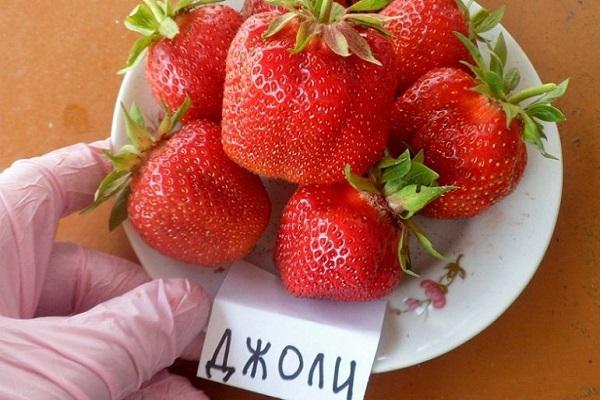
How to care
Care for Jolie strawberries follows a scheme similar to caring for any Italian and French varieties.
Top dressing
The strawberry bush lives in one place for 4 years. Therefore, the plant needs regular feeding. On depleted soils, it is impossible to achieve a plentiful and high-quality harvest.
If, when planting a bush, the soil was well fertilized, then during the first year the strawberries can not be fed. Then fertilizing is necessary:
- With the onset of spring, ash is poured under each plant, and humus or manure is also added to the infertile soil.
- When forming buds, it is useful to use organic fertilizers.
- After the first fruiting, the plants need complex mineral fertilizing.
- In September - early October, the soil is enriched with phosphorus-potassium fertilizers.
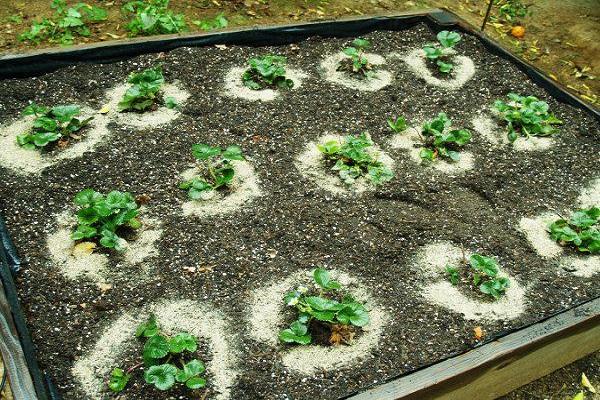
Watering
The Joli variety is drought tolerant. But during the period of active growth of green mass, the formation of buds and fruits, strawberries need regular watering. It can be carried out in a trench way. Watering plants under the root is impractical due to the spreading root system.
When the fruiting period is over, water the strawberries after 2-3 days, and in case of drought, daily.
Mulching
The ideal conditions for the Jolie cultivar are light, breathable soils. The soil must be loosened regularly to prevent the appearance of a crust on the surface.
Plants need hilling. Before the first flowers appear, this should be done 3 times a week. When strawberries begin to yield, you can huddle them every 2 weeks.
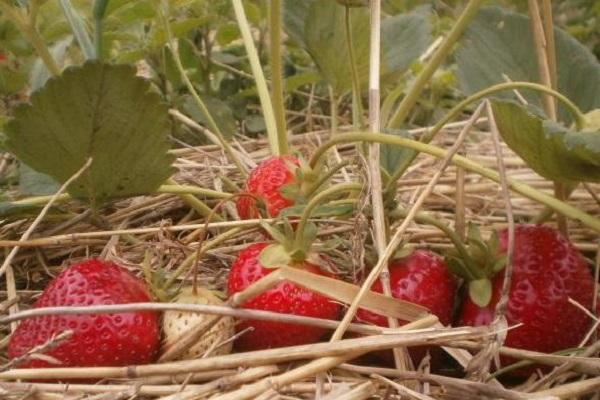
It is recommended to mulch the soil to maintain moisture and protect against weeds. To do this, you can use sawdust, straw, peat, filling them with a layer of 10-15 centimeters. Alternatively, you can use a special black cloth.
Preparing for winter
Jolie variety is frost-resistant. But for successful wintering, proper plant preparation is required:
- abundant pre-winter watering;
- the introduction of phosphorus-potassium fertilizers;
- mulching.
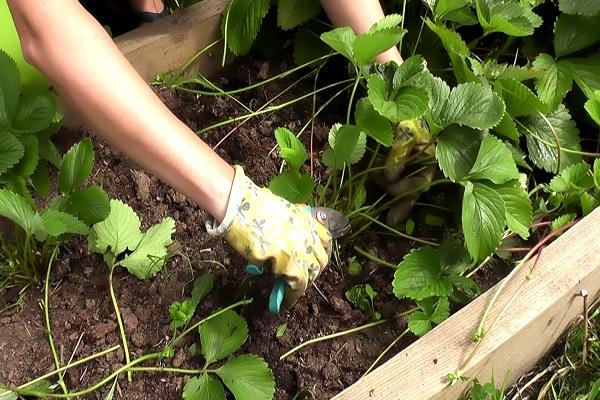
How to protect strawberries from pests and diseases
Jolie proved to be resistant to many diseases and pests. And yet it is necessary to monitor the state of the foliage, the root system. Plants can be threatened by:
- Strawberry mites and aphids. To get rid of them, you can use Bordeaux liquid or onion peels.
- Slugs. To protect the beds, sprinkle with ash or mustard, and perform mulching.
- Gray rot. You can fight it with Bordeaux mixture. As a preventive measure, some gardeners plant onions and garlic next to strawberry beds.
- Powdery mildew, nematode. To cope with these diseases, it is necessary to treat healthy plants with fungicides, and dig up the affected ones.
Reproduction
During the first year after planting, young strawberry bushes produce 2–5 healthy whiskers, which are good planting material. For reproduction, some of the strongest specimens are rooted, the rest are removed.
You can root the mustache directly into the ground or in a plastic container. At the end of summer, the formed rosettes can be separated from the mother plants and planted in a permanent place.

We collect and store the harvest
For picking berries, it is good to prepare not too deep containers. Although the Jolie fruit does not wrinkle much, it is advisable to collect and transport them in small containers. The best time for a pleasant job like harvesting strawberries is morning and evening.
The shelf life of fresh berries in the refrigerator is up to 6 days. If you need to stock up on strawberries for a longer period, they need to be frozen and stored in the freezer. First, the berries must be peeled from the stalks and dried well.
The secret of Jolie's rich strawberry yields is a thorough study of the characteristics of the variety and adherence to the rules of agricultural technology. In good weather, berries can be picked from the beds starting in mid-June for 3 weeks. The collected fruits are quite enough to get a charge of vitamins with fresh products, and for harvesting for the winter.
